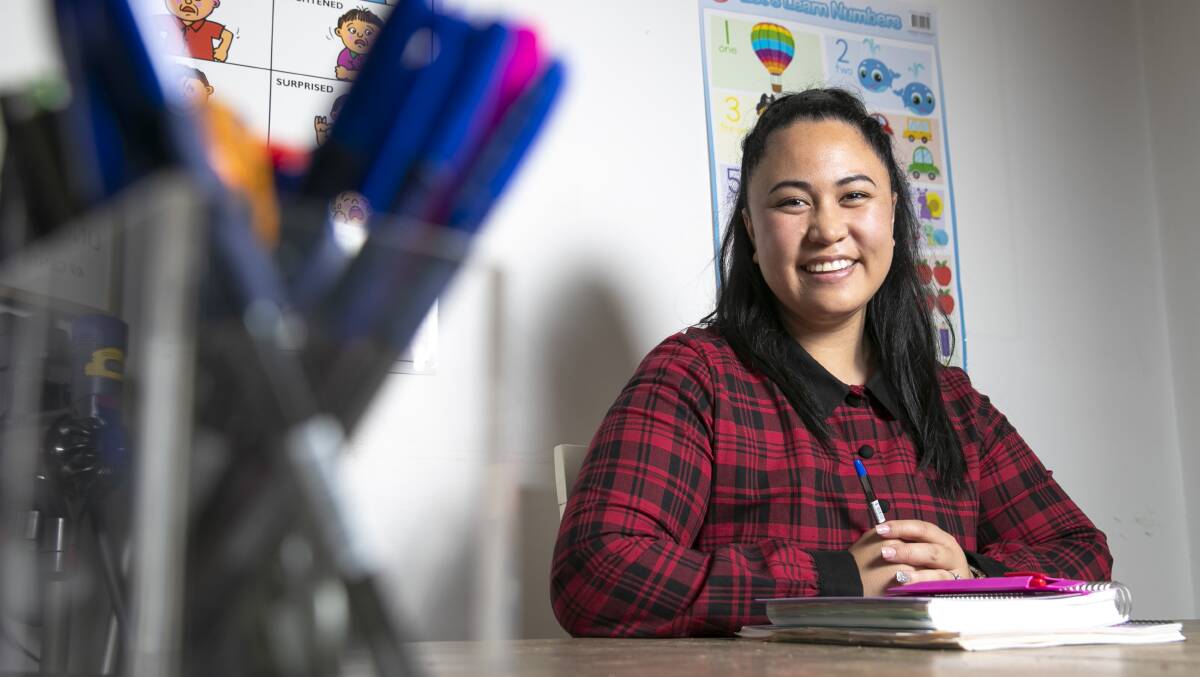
In the three years she has worked as a relief teacher in Canberra schools, Sarieda Snow has never been short of work.
Instead, Ms Snow has actively had to avoid more permanent work, as schools scramble to fill positions amid shortages.
Despite this, she has twice taken up contract positions to help out struggling schools, including most recently a contract role at St Thomas Aquinas Primary School.
"I love the school that I'm at, so I'm always happy to help them out but it wasn't something that I was looking into doing," Ms Snow said.
The school's principal, Leah Taylor, said she asked Ms Snow to step in after being unable to fill a classroom position in time when the previous staff member left. Though she'd advertised for a replacement, she still hadn't had any applications.
Casuals were few and far between, Ms Taylor said, adding the school was unable to find relief teachers to fill the gaps "most days".
'The demand on teachers can dwindle away that passion'
"Most days we would have members of our leadership team teaching class or we've been collapsing classes, so we've had one teacher taking two classes," Ms Taylor said.
Generally schools could "cohort" classes, splitting one class across a number of others. But COVID-19 had put a stop to that practice.
"Quite often we've had one teacher who, with the support of a classroom support assistant, [takes] two classes," Ms Taylor said.
Ms Snow said from her perspective there were many reasons behind a national shortage of teachers, which was hitting territory schools as well.
The demand on teachers to stay up-to-date, transition to remote models and dedicate out-of-school hours to planning, all for less-than-ideal pay, had worn away at many, she said.
"I am very passionate about teaching, and sometimes the demand on teachers can start to dwindle that passion," Ms Snow said.
"And it's such a shame because there are some fantastic teachers that we are losing because of that, because of the heavy demand, because of the excessive hours and because of the very little pay."
Attractive salaries fall away after nine years
Data from the Australian Institute of Teaching and Senior Leadership found mathematics was being taught by out-of-field teachers 40 per cent of the time due to strain on the workforce.
Chief executive Mark Grant said the reasons behind shortages across Australia were complicated, with differences across government, private and Catholic sectors.
COVID-19 had impacted university course completions and put many experienced teachers out of action due to isolation requirements, while the strain was concentrated in remote areas where it was harder to attract long-term teachers.
"People see salary and working conditions, a focus on administrative burden and red tape as reasons why perhaps teaching isn't as attractive as it has been at previous times," Mr Grant said.
While the starting salary was quite attractive, income started to plateau after nine years, Mr Grant said. Data showed many teachers moved to leadership positions or left the profession completely after nine to 12 years.
Despite the challenges, the chief executive said he believed teaching to be a uniquely rewarding profession.
Enrolment still strong in teaching: UC
The University of Canberra's executive dean of the Faculty of Education, Professor Barney Dalgarno, said the ACT was experiencing a slice of a national issue, but interest hadn't dwindled in studying teaching.
"We've seen a demographic spike in the age of teachers, which means that we've got a pipeline of retiring teachers which is at higher numbers than the number of new teachers joining the profession," Prof Dalgarno said.
"Our enrolment numbers have been very steady over the last five years or so. We've seen a slight shift in numbers from undergraduate ... [to] people career changing," he said, adding the university had been enrolling about 500 teaching students per year.
In the ACT, final-year students were unable to teach casually until they had completed the practical component of their course. However, NSW students were able to teach in the final year of their degrees.
Ms Taylor said though she understood the importance of practical experience to bolster skills and confidence, she had noticed this drawing some teachers away.
"We have had instances where staff who have been working in non-teaching positions have ... finished all but the practical components for the teaching degree, and because they haven't been able to do their practicum, because of COVID, generally, they can't get their degree," she said.
A spokesperson for the ACT Education Directorate said it was not considering allowing last-year teaching students to teach in the ACT.
Prof Dalgarno said one way to inject more teachers into Canberra schools would be to allow students completing a masters of teaching to be able to work after one year of study, rather than two.
"[That would] really make it attractive for career changers so that they don't need to go two whole years without a salary to enter teaching," he said.







